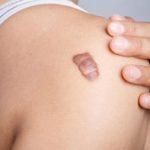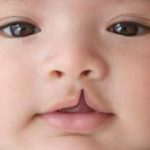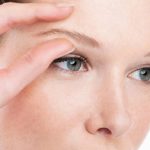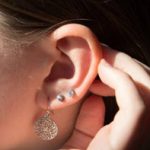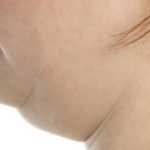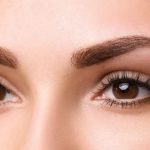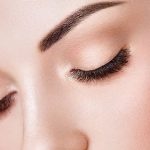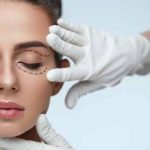 Plastic surgery has become a trend in the last decades, and the most famous of which is rhinoplasty with a huge demand on it all over the world. For this reason, some less experienced surgeons claim they are able to do this delicate surgery, causing great numbers of patients to be unsatisfied with their results and making it mandatory for them to resort to another surgery to fix the bad results of the previous one in what is called revision rhinoplasty or revision nose job. Many of those choose to opt for revision rhinoplasty in Iran because of the high reputation of the Iranian surgeons in plastic surgery in general and in rhinoplasty in particular.
Plastic surgery has become a trend in the last decades, and the most famous of which is rhinoplasty with a huge demand on it all over the world. For this reason, some less experienced surgeons claim they are able to do this delicate surgery, causing great numbers of patients to be unsatisfied with their results and making it mandatory for them to resort to another surgery to fix the bad results of the previous one in what is called revision rhinoplasty or revision nose job. Many of those choose to opt for revision rhinoplasty in Iran because of the high reputation of the Iranian surgeons in plastic surgery in general and in rhinoplasty in particular.
Understanding revision rhinoplasty and why patients seek out this procedure
Most plastic surgeons agree that rhinoplasty is one of the most challenging cosmetic (aesthetic) plastic surgery procedures for many reasons. The nose is a complex structure with an obvious position in the middle of one’s face. Expert rhinoplasty requires simultaneously correcting nasal deformities while preserving maximal nasal function. One cannot make a nose look good without optimizing nasal airway function.
Why do patients choose revision rhinoplasty?
Patients who are looking for a revision or secondary rhinoplasty challenges the skills and experience of plastic surgeons. Revision rhinoplasty applies to any patient who has previously undergone rhinoplasty one or more times and desires improvement in the appearance and often the function of the nose. These are among the most difficult cases aesthetic plastic surgeons face for several reasons.For one, patients are often unhappy with their prior surgery and may not understand that further rhinoplasty may not be successful in completely correcting cosmetic deformities which were not corrected in the last surgery or occurred as a result of surgery. Scar tissue from prior rhinoplasty is often an issue in revision cases and can limit the final outcome since it may recur even after successful revision rhinoplasty. Also, revision rhinoplasty often requires the use of cartilage to replace damaged and/or deficient cartilage removed in the prior surgery.The nasal septum may be deviated, which requires correction to improve both the appearance of the nose and its function. Nasal obstruction may also be caused by a collapse of the tip cartilages resulting in external valve collapse. Deviation of the nasal septum along with deficiencies in upper lateral cartilages are a common occurrence in revision cases resulting in internal valve collapse requiring the use of cartilage grafts called “spreader grafts” to spread open this narrowed area.
What is done in a revision rhinoplasty?
Revision rhinoplasty often requires cartilage for structural support for the tip and/or bridge of the nose. Septal cartilage is often deficient and plastic surgeons often must choose cartilage from elsewhere in the body, particularly the ear and occasionally the rib. Soft tissue irregularities along the bridge of the nose or tip may also require tissue that provides a cover or camouflage and acts as a “natural filler” which is permanent. An excellent source is “temporalis fascia,” which can be taken from a remote incision within the hairline and results in no noticeable deficit. Occasionally, scarring within the nose requires the use of skin grafts to reopen a distorted and narrowed nasal airway.Despite a surgeon’s best efforts, revision rhinoplasty has a higher revision rate than primary rhinoplasty (no prior nasal surgery). It is important that you are aware of this as no ethical plastic surgeon can guarantee the outcome of revision rhinoplasty or any other cosmetic plastic surgical procedure for that matter.If you are considering revision rhinoplasty then make sure your board-certified plastic surgeon has substantial experience with rhinoplasty. Experienced rhinoplasty surgeons are more likely to see revision cases than those who do this operation infrequently. Look at your prospective surgeon’s website to see how many rhinoplasty cases are in their photo gallery. Computer imaging may be helpful for your surgeon to visually communicate what potential outcome you may expect from surgery. Previous rhinoplasty patients are also a great resource for prospective patients; your plastic surgeon should be able to supply you with patients who have offered to speak with you and others and discuss their experience in some detail.In the end, your decision to undergo revision rhinoplasty is a personal one. Choosing an experienced, board-certified plastic surgeon who has “connected” with you and earned your trust will offer the best chance of a successful outcome. Most patients who are unhappy with the outcome of primary rhinoplasty are pleased with the final result from revision rhinoplasty if they follow these simple recommendations.
WHAT WE OFFER
- Revision Rhinoplasty
Clinic and doctor visits, medical tests, medical photography, nose surgery in hospital, post-operative care, medicines*, recovery, and follow-up
- T-Visa Authorization Code
T-visa authorization code. (Note that there is a separate visa fee that the patient must pay when receiving the visa, which it is not part of this package).
- Pick-up & Transfer
Airport pick-up, private transfer from hotel to clinic/hospital and vice versa
- Accommodations
Three-star to five-star hotel offered which is preferably near the clinic or hospital
- Other Services
24-hour on-call assistance, interpreter, SIM card and internet
Note: The medicines and other aftercare items included in this package are the necessary items prescribed by the surgeon.
Also, the doctors and hotels and clinics which are included in the package are offered by SinoheMedTour to the patient. There may be other doctors whom the patients are considered and the price might be different. Based on a new policy of the Ministry of Foreign Affairs, the citizens of the USA, UK, and Canada are included in different logistic services.
Your detailed schedule after arrival in Iran
>> Day 1: Arrival at airport: you will be welcomed by our guide, then picked up and transferred to hotel*. Checking into hotel; Transfer from hotel to clinic; Visiting the doctor; Pre-op tests/images; Transfer from clinic to hotel
>> Day 2: Transfer from hotel to hospital; Preparations for surgery; Conversation between doctor & patient, reviewing the expectations; Performing of surgery; Post-op recovery at hospital; Taking doctor’s instructions; Transfer to hotel
>> Day 3: Rest in hotel; Taking post-op medications; following instructed diet; Follow-up through doctor’s assistant
>> Day 4: Rest in hotel; Follow-up through doctor’s assistant, checking patient’s condition; Starting daily walking (30 min/day)
>> Day 5: Rest in hotel; Regular eating restarts; Daily walking
>> Day 6: Taking shower at hotel and preparing for nose splint removal**; Transfer from hotel to clinic; Check-up and splint removal ***(by doctor); Medical photography****; Doctor instructs patient how to tape the nose at home; Reviewing post-op instructions and dos & don’ts; Receiving written certificate from doctor confirming patient is fit to fly; Transfer from clinic to hotel
>> Day 7: Transfer from hotel to SinoheMedTour office*****; SinoheMedTour gives patient special gift; Start of permanent follow-up through communication channels.
>> Note:
* Transfer from the airport to the hotel will be with the taxi.
** This is a rough estimation and it may be a day sooner or later.
*** It may be done by the doctor assistant (aide) based on the doctor availability but this will not be a problem because it is an ordinary job.
**** It may be needed or not depending on the doctor diagnosis.
***** In some cases where your departure is in the weekends this step may not be feasible.
If there would be a need for the artificial graft in the nose job that would be done with an extra cost.
Revision Rhinoplasty Recovery Timeline
No two patients will heal at exactly the same rate, as each body is unique and will respond to the surgery in different ways. As such there is no definitive revision rhinoplasty recovery timeline. Here are a few additional guidelines to help you achieve the best results and a rapid recovery:
- Stick with a healthy diet by eating the right foods and drinking plenty of water.
- Do not smoke. If you do, quit as quickly as possible.
- Avoid taking Advil, Aspirin and Motrin for two weeks prior to surgery. Be sure to discuss any vitamins, minerals, supplements and medications with your surgeon before surgery.
But on average, patients with thin healthy skin may require 6-12 months, whereas patients with thick scar-prone skin may require up to two years for all manifestations of inflammation to resolve
Revision Rhinoplasty Risks and Complications
Although higher than in primary rhinoplasty, revision rhinoplasty overall has a low rate of complications. Individual surgeon’s results may vary widely, however. That’s why it is important to find an experienced surgeon with superior surgical judgment and meticulous technique, honed over years of specialized practice.
From among this elite group, select a surgeon you trust to improve the form and function of your nose with revision rhinoplasty.
These are perhaps the most important risks your surgeon will discuss with you:
- Bleedingmay be the most common risk of rhinoplasty or revisional rhinoplasty, since blood vessels may be damaged during each surgery. Most patients lose a small amount of blood during surgery and a very few may experience significant post-surgery blood loss. In the absence of a bleeding disorder, blood loss almost never rises to the level needing hospitalization or blood transfusion. Usually, nasal packing for 12-36 hours is all that’s needed. Blood-thinning medications, even mild ones like baby aspirin, can cause excessive bleeding, so you will be instructed to avoid certain prescription and non-prescription drugs and herbal supplements. Be gentle with your nose during the healing process, since forceful blowing of your nose or bumping the nose can also cause bleeding.
- Adverse anesthesia reactionsare avoided when a highly qualified anesthesiologist administers general anesthesia (typically needed for revision rhinoplasty). Top surgeons work with only the best anesthesiologists to ensure patients are well cared for and properly monitored throughout the rhinoplasty procedure. General anesthesia involves both intravenous medications and an airway-protecting breathing tube. A physical exam prior to surgery to make sure your health is good and the investigation of any prior anesthesia reactions that you or your family members may have experienced helps forestall any problems.
- Nasal blockage or the sensation thereofcan occasionally occur. As your nasal contours are reshaped, changes may need to be made to the septum and, in some cases, the overall size of your nose may need to be reduced. There will be initial swelling and numbness that may contribute to temporary breathing difficulties, which typically resolve as swelling decreases and you become accustomed to your new nose. In some cases, the nasal septum may be perforated or a weakened nose may collapse. Impeccable surgical technique and proper patient selection usually prevent these major problems. Scar tissue from initial and/or secondary rhinoplasties may narrow the airway. Rarely, a graft may slip out of place and partially block the nasal passage. A careful pre-surgery exam and detailed, well-executed surgical plan can prevent these complications in most cases. Make sure to describe any breathing problems you may have to your surgeon to ensure the complete repair of internal abnormalities.
- Infection is a rare risk since the nasal blood supply is fundamentally robust. Compromised nasal lining, prior drug use, scarred soft tissue coverage and the need for grafting can complicate matters. To help prevent problems due to infection, patients are instructed to watch for symptoms, such as a fever, excessive swelling, odorous nasal discharge or pain—and contact their surgeon right away.
- Dissatisfaction with the outcomeis a risk that can be minimized with clear surgeon-patient communication and a meticulous well thought out plan prior to surgery. Unrealistic expectations are managed by a straightforward surgeon who honestly explains the improvements that can be achieved with corrective surgery. The corrections depend upon your desires/expectations, the quantity and quality of remaining tissue and structural support, scar tissue from prior surgery, the thickness and elasticity of skin and many other variables. Make sure the result your surgeon describes matches closely enough with your goals—and that your goals are realistic—before going forward with surgery.
WHAT TO DO BEFORE CONSIDERING A REVISION RHINOPLASTY?
- Make sure your nose if fully healed from the previous surgery
First and most importantly, take all the time you need for your nose to fully recover after your previous nose job before undergoing a revision nose job. Generally, it is recommended to wait for one year before undergoing a revision rhinoplasty since nose job surgery takes a full year to heal.
- Consult an expert before considering a revision rhinoplasty
Undergoing a revision rhinoplasty mainly depends on the:
- Dissatisfaction caused by the first rhinoplasty
- Amount of the nasal septum removed during initial procedure
- The quality of the nasal airway, and the skin of the patient.
- Choose your surgeon carefully
A revision rhinoplasty is more delicate than the primary rhinoplasty, as many additional issues should be taken into consideration, which requires a highly experienced plastic surgeon or ENT surgeon.
WHAT TO DO TO SPEED UP THE RECOVERY PROCESS?
- Follow the doctor’s instructions
Listen carefully to what the plastic surgeon has to say, as you will receive specific instructions on what medications to take, and how to take care of the wound in order to avoid infection.
- Don’t hesitate to ask for professional assistance
If something does not feel right during the recovery period, or you are experiencing any type of unwanted symptoms, discuss it with your doctor right away.
- Sleep only on your back and keep your head elevated at all times
Sleeping on your side after having a revision rhinoplasty can cause more swelling and bruising. It might also displace your nose in rare cases. To avoid this, you will need to keep your head elevated at night for 6 weeks after the surgery.
- Apply cold compresses
Using cold compresses can significantly reduce the swelling in the first 72 hours after the surgery, as long as it is being applied carefully to the swollen area.
- Get plenty of rest
Rest is a vital part of the recovery process, as the body needs energy to heal itself.
- Maintain a healthy diet
Make sure your body gets all the nutrition needed for the healing process, whether by eating fruits and vegetables or by using supplements.
- Avoid touching your nose or wearing glasses
After surgery, you are going to have to resist the urge to blow your nose, as the experienced nasal congestion is caused by the swollen nasal tissues. Instead, contact your doctor and ask him/her about using a saline nasal spray to moisturize your nasal passages until the swelling goes away. It is also advised to switch to contact lenses instead of wearing glasses, as glasses are known to put pressure on the nose, which might cause additional bruising or swelling. If you cannot use contacts, consult with your surgeon to decide on a suitable type of glasses that is specifically designed to be used after rhinoplasty.
- Allow your body to take all the time needed to heal
Don’t rush things, be patient and have faith. Your nose will heal eventually, and you will have the expected results in the right time.






